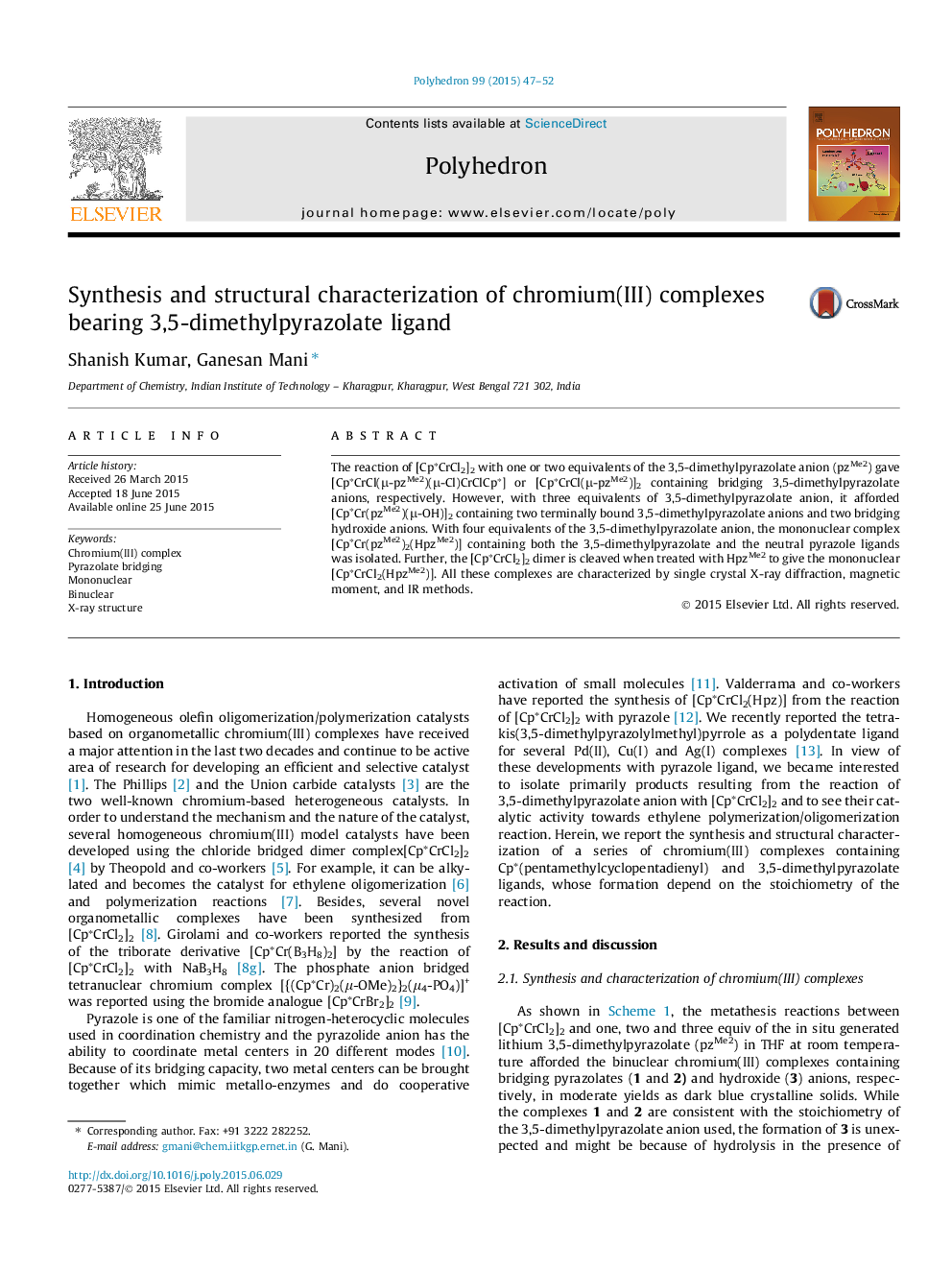| Article ID | Journal | Published Year | Pages | File Type |
|---|---|---|---|---|
| 1337075 | Polyhedron | 2015 | 6 Pages |
The reaction of [Cp∗CrCl2]2 with one or two equivalents of the 3,5-dimethylpyrazolate anion (pzMe2) gave [Cp∗CrCl(μ-pzMe2)(μ-Cl)CrClCp∗] or [Cp∗CrCl(μ-pzMe2)]2 containing bridging 3,5-dimethylpyrazolate anions, respectively. However, with three equivalents of 3,5-dimethylpyrazolate anion, it afforded [Cp∗Cr(pzMe2)(μ-OH)]2 containing two terminally bound 3,5-dimethylpyrazolate anions and two bridging hydroxide anions. With four equivalents of the 3,5-dimethylpyrazolate anion, the mononuclear complex [Cp∗Cr(pzMe2)2(HpzMe2)] containing both the 3,5-dimethylpyrazolate and the neutral pyrazole ligands was isolated. Further, the [Cp∗CrCl2]2 dimer is cleaved when treated with HpzMe2 to give the mononuclear [Cp∗CrCl2(HpzMe2)]. All these complexes are characterized by single crystal X-ray diffraction, magnetic moment, and IR methods.
Graphical abstractThe controlled substitution of the chlorine atoms of the [Cp∗CrCl2]2 complex with the 3,5-dimethylpyrazolate anion gave the binuclear chromium(III) complexes containing one and two bridging pzMe2 ligands. Besides, it afforded the mononuclear complex [Cp∗Cr(pzMe2)2(HpzMe2)]; all these are structurally characterized.Figure optionsDownload full-size imageDownload as PowerPoint slide
